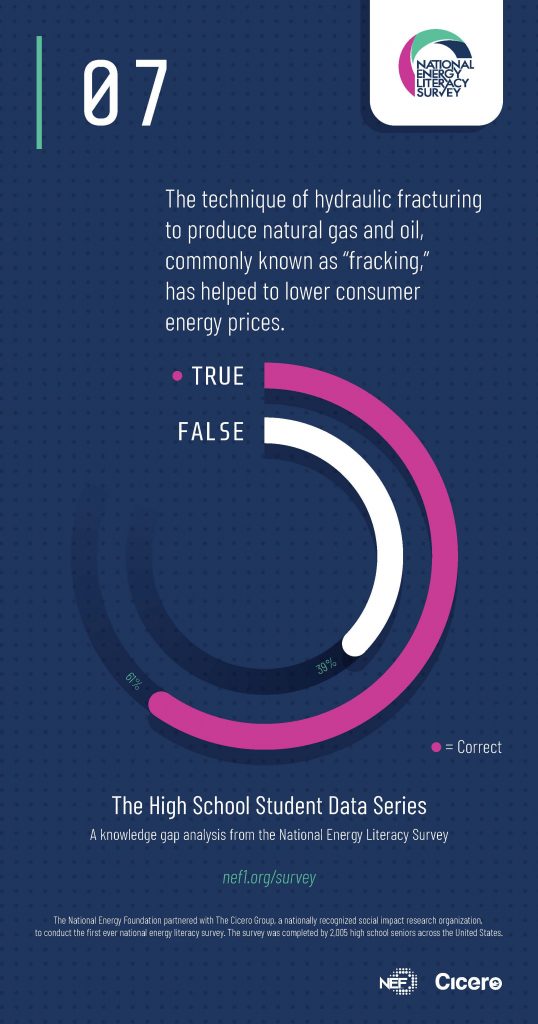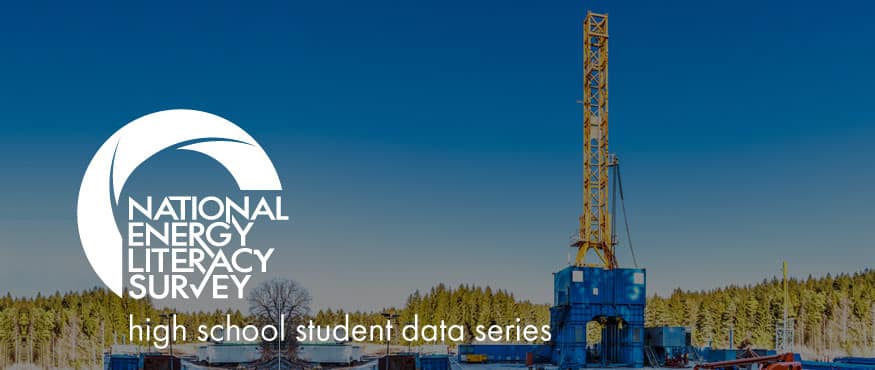Hydraulic Fracturing, often known as fracking, is a technique of priming an oil and gas well. Pressurized liquid fractures rocks. Once fractured, the rock releases “loosened” oil and gas. This process produces oil and gas previously inaccessible by traditional drilling methods.
Survey Question: The technique of hydraulic fracturing to produce natural gas and oil, commonly known as “fracking,” has helped to lower consumer energy prices.

Technology
Hydraulic fracturing involves the injection of high volumes of water, gas and sand and chemicals at high pressure down wells. The injection pressure of the fluids creates fractures that enhance gas and fluid flow. These wells can be as much as 10,000 feet below the surface. Hydraulic fracturing techniques have been used to excavate oil and gas for more than 60 years. However, horizontal drilling coupled with multiple applications of hydraulic fracturing in a single well was pioneered in the late 1980’s. The process continues to evolve and improve.
Hydraulic Fracturing Pros and Cons
Economic Benefits
The use of this technique to produce oil and gas from previously unproductive shale rock formations has dramatically increased. Which has moved hydraulic fracturing and related processes into areas where oil and gas extraction had not previously been successful. This unconventional oil and gas resource development is at the heart of the increase of domestic US oil and gas production.
The US has achieved record setting months recently in the production and export of crude oil. Extracting oil and natural gas from shale has reduced the amount of oil the US imports. This is boosting the US economy in the form of jobs, investment, and growth.
Environmental Challenges
There has been intense scrutiny around the processes that effect air quality, water supply, water quality, wastewater associated with hydraulic fracturing. As well as cause increased seismicity. Increased volatile organic compounds are potential air quality threats along with methane potentially escaping during extraction.
Threats to water resources include surface spills, wastewater disposal, and drinking-water contamination through poor well integrity. Fluid escaping during the process can contaminate ground water. The disposal of wastewater is challenging because of the large amounts and also because the wastewater includes chemical additives.
Some states have recorded induced seismicity called microearthquakes associated with hydraulic fracturing. Organizations around the world are studying the environmental effects of hydraulic fracturing to better understand the effects on seismicity, air and water quality, and overall health to the public.
Ongoing Exploration
In addition to the economic benefits gained from hydraulic fracturing, unconventional oil and natural gas extraction is driving oil production to record heights in the US. We need a correlated investment into research and ensuing environmental regulations as the technique continues to grow around the world.
During the 2016-2017 school year, NEF launched an unprecedented initiative call the National Energy Literacy Survey. The energy survey measured high school students’ knowledge, attitudes, and behaviors. For more information regarding the National Energy Literacy Survey please reach out to [email protected]


